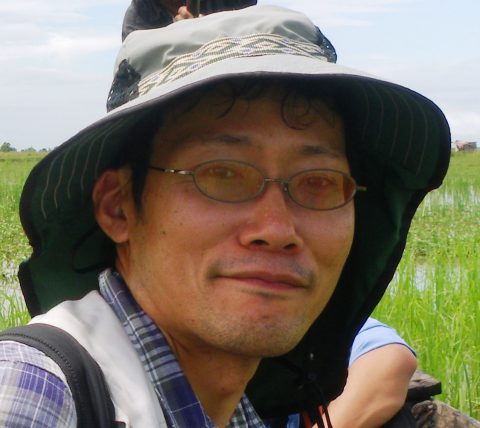Akihiko KAMOSHITA, Professor
・Cross-Appointed Faculty, International Program in Agricultural Development Studies (IPADS)
Laboratory of Regional Resources Reassessment, Asian Research Center for Bioresource and Environmental Sciences, the Graduate School of Agricultural and Life Sciences, the University of Tokyo

https://en.kamoshitalab.com/blank
Contact information:
Phone +81-70-1579-9740
>EMAIL akamoshita[at]g.ecc.u-tokyo.ac.jp
Discipline(s)
Crop Science, Agroecology, Agronomy, Sustainability Science
Research interests
My research interest is firstly mechanisms of crop production in relation with resource utilization, responses to climate, and adaptation to abiotic stress under various environmental and managemental conditions. I am currently working on crop production with relation to symbiosis with arbuscular mycorrhiza under different environmental and managemental conditions.
My second research interest is diversity and heterogeneity of agroecosystems in both large and small scales. The heterogeneity of agroecosystem within a target area is small scale environmental variation, which would be related with success and failure of extension of new technologies, becoming as a source of gap between farm yield and potential yield. I have been investigating diversity of rice ecosystems such as rainfed lowlands, deepwater rice, tank irrigation rice, delta rice, and taipa rice.
My third research interest is sustainability science. Sustainability has social component, and sustainable agriculture cannot be attained where social injustice prevails. Extension of technologies can be studied as a decision of how to utilize new and traditional technologies, including perception of people.
Major publications
- Y P, Ohtomo R, Nakanishi H, Kamoshita A (2023) Effects of arbuscular mycorrhizal fungi inoculation on infection and growth of rice and pearl millet in upland fields with three water regimes, Plant Production Science, DOI: 10.1080/1343943X.2023.2251181.
- Phan L, Kamoshita A (2023) On-farm agronomic manipulations to improve rice (Oryza sativa) production in the saline coastal zone of the Red River Delta in Vietnam, Plant Production Science, 26, 209-224.
- Nguyen HAT, Kamoshita A, Ramalingam P, Y P (2022) Genetic analysis of root vascular traits in a population from two temperate japonica rice ecotypes. Plant Production Science, 25, 320–336.
- Deshmukh V, Kamoshita A, Lopez-Galvis L, Pineda D (2021) Ecophysiology of drill-seeded rice under reduced nitrogen fertilizer and reduced irrigation during El Niño in Central Colombia. Plant Production Science, 24, 1-15.
- Suwanmontri P, Kamoshita A, Fukai S (2021) Recent changes in rice production in rainfed lowland and irrigated ecosystems in Thailand. Plant Production Science 24, 15-28.
- Y P, Kamoshita A, Norisada M, Deshmukh V (2020) Eco-physiological evaluation of Stele Transversal Area 1 for rice root anatomy and shoot growth. Plant Production Science 23, 202-210.
- Suwanmontri P, Kamoshita A, Jongdee B, Fukai S, Kishino H (2018) Comparative analysis of farmers engaged in participatory research to cope with climate change versus non-participants in Northeast Thailand. Plant Production Science 21, 287-301
- Ramalingam P, Kamoshita A, Deshmukh V, Yaginuma S, Uga Y (2017) Association between root growth angle and root length density of a near-isogenic line of IR64 rice with DEEPER ROOTING 1 under different levels of soil compaction. Plant Production Science 20, 162-175.
- Kamoshita A, Ikeda H, Yamagishi J, Lor B, Ouk M (2016) Residual effects of cultivation methods on weed seed banks and weeds in Cambodia. Weed Biology & Management 16, 93–107.
- Kamoshita A, Ouk M 2015 Field level damage of deepwater rice by the 2011 Southeast Asian Flood in a flood plain of Tonle Sap Lake, Northwest Cambodia. Paddy & Water Environment 13, 455-463.
- Kamoshita A, Araki Y, Nguyen YTB 2014 Weed biodiversity and rice production during the irrigation rehabilitation process in Cambodia. Agriculture, Ecosystem & Environment 194, 1–6.
- Nishizaka R., Hori S, Kamoshita A. 2011. Landscape recognition by the students of Battambang, Cambodia – Analysis of landscape description at rural areas under development. Journal of Rural Planning Association 30, 219-224.